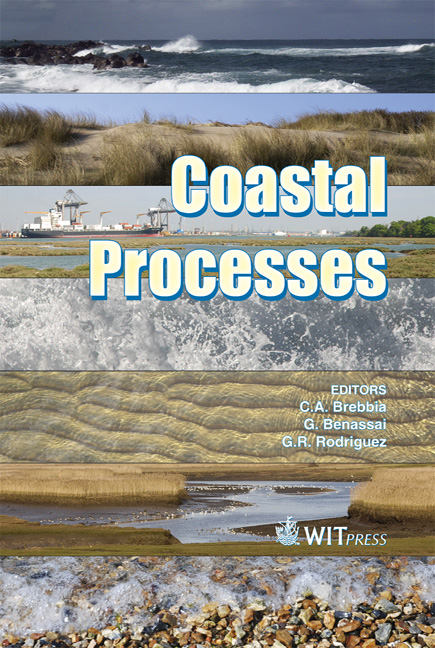Sediment Flux In A Rip Channel On A Barred Intermediate Beach Under Low Wave Energy
Price
Free (open access)
Transaction
Volume
126
Pages
13
Page Range
197 - 209
Published
2009
Size
986 kb
Paper DOI
10.2495/CP090181
Copyright
WIT Press
Author(s)
B. Greenwood, R. W. Brander, E. Joseph, M. G. Hughes, T. E. Baldock & T. Aagaard
Abstract
The classic model of water and sediment flux in barred surf zones is a net flux landward across a nearshore bar, alongshore in a feeder channel, and offshore in narrow jet-like flows in a rip neck cut through the bar; this circulation is frequently modulated by the tide, even under micro-tidal conditions. Water levels, waves, currents and suspended sediment transport (SST) were recorded at elevations of z = 0.13, 0.26 and 0.39 m in a rip neck on an intermediate bar-rip beach at a micro-tidal site, Bennett's Beach, NSW, Australia. Measurements revealed SST was driven by quasi-steady rip currents and by gravity and infragravity waves. The balance between these components determined the magnitude and direction of the overall net SST. Tentative conclusions are that: (i) the direction of the overall net SST rate in the rip neck was dominated, as expected, by offshore-directed mean cross-shore currents, especially around high tide; at this time the SST rates due to gravity and infragravity waves were relatively small and somewhat variable in direction. (ii) as the tide fell, relatively large SST rates were directed onshore by shoaling gravity waves propagating through the neck, which opposed and even exceeded the rip current transport. At mid-tide, the transport by infragravity waves complemented the gravity waves such that the overall net flux of
Keywords
rip currents, sediment flux, wave and tide modulation





